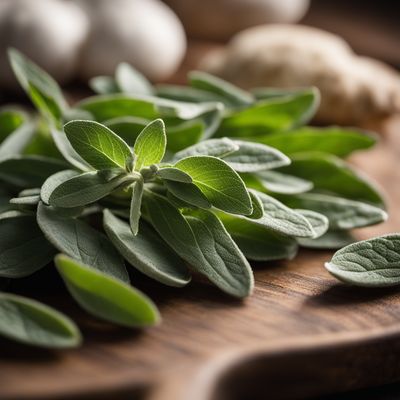
Ingredient
Evening primrose leaves
The Medicinal Marvel of Evening Primrose Leaves
Evening primrose leaves, derived from the evening primrose plant, are highly regarded for their medicinal properties and nutritional benefits. These vibrant green leaves are rich in essential fatty acids, antioxidants, and other bioactive compounds that contribute to their healing and therapeutic effects.
Origins and history
Evening primrose leaves have a long history of use in traditional medicine, particularly among Native American tribes. They were valued for their ability to alleviate various ailments, including skin conditions, inflammation, and hormonal imbalances. Today, evening primrose leaves are commonly used in herbal remedies and natural skincare products.
Nutritional information
Evening primrose leaves are a nutritional powerhouse, packed with essential fatty acids like gamma-linolenic acid (GLA), vitamins, and minerals. They are a good source of antioxidants, which help protect the body against oxidative stress and inflammation. These leaves also contain anti-inflammatory compounds that may support skin health, hormonal balance, and overall well-being.
Allergens
Evening primrose leaves are generally safe for consumption, but individuals with allergies to plants in the Onagraceae family, such as willow herb or fireweed, may experience allergic reactions. It is advisable to consult a healthcare professional before using evening primrose leaves if you have any known allergies or medical conditions.
How to select
When selecting evening primrose leaves, look for fresh, vibrant leaves that are free from blemishes or signs of wilting. The leaves should have a bright green color and a crisp texture. Avoid any leaves that appear yellowed, slimy, or damaged.
Storage recommendations
To maintain the freshness of evening primrose leaves, store them in a plastic bag or airtight container in the refrigerator. They can stay fresh for up to a week. Before using, rinse the leaves thoroughly under cold water to remove any dirt or debris.
How to produce
Evening primrose plants can be grown in home gardens or containers. They prefer well-drained soil and partial shade. Sow the seeds directly in the garden or start them indoors and transplant them once they have developed a few leaves. Harvest the leaves when they are young and tender, as older leaves can become tough and bitter.
Preparation tips
Evening primrose leaves can be used in a variety of ways. They can be added to salads, sandwiches, or wraps for a nutritional boost. The leaves can also be lightly sautéed with garlic and olive oil, steamed as a side dish, or incorporated into soups and stews. Additionally, evening primrose leaves can be used to make herbal teas or infused oils for topical applications.
Culinary uses
Evening primrose leaves are primarily used for their medicinal properties and are not commonly found in mainstream culinary applications. However, they can be used as a nutritious addition to salads, sandwiches, or cooked dishes. These leaves are often used in herbal remedies, natural skincare products, and traditional medicine.
Availability
Evening primrose plants are native to North America and are commonly found in regions with temperate climates. They can be cultivated in home gardens or sourced from herbal suppliers. Evening primrose leaves are also available in dried form for herbal preparations.
More ingredients from this category » Browse all

Thyme and similar-
The Aromatic Herb: Thyme and Its Cousins

White ginger
The Fragrant Spice: Unveiling the Delights of White Ginger

Celery leaves and similar-
The Green Elixir: Unleashing the Power of Celery Leaves

Laurel and similar-
Aromatic Leaves: Unveiling the World of Laurel and Similar Herbs

Sage and similar-
"The Herb of Wisdom: Exploring the Versatility of Sage and Similar Ingredients"

Aniseed myrtle
The Fragrant Australian Spice

Basils and mints
The Aromatic World of Basils and Mints

Wintergreen leaves
The Refreshing Minty Herb

Parsley and similar-
Versatile Herb: Parsley and Similar

Tarragon and similar-
The Herb of Elegance

Chervil and similar-
"The Delicate Herb: Unveiling the Secrets of Chervil and Similar Ingredients"

Sassafras leaves
The Aromatic Wonder: Unveiling the Secrets of Sassafras Leaves